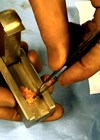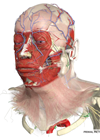Features
Is rhinoplasty still a plastic surgery procedure?
As a result of the rationing of healthcare in the NHS and the treatment of nasal trauma by other specialties, there is anecdotal evidence that current plastic surgery trainees have less exposure to rhinoplasty procedures. This article explores the issue...
Threads in rhinoplasty: to thread or not to thread?
Polydioxanone (PDO) and poly-L-lactic / poly-caprolactone (PLL / PCL) threads are presently accessible for facial rejuvenation, and they enjoy significant popularity within aesthetic clinics worldwide, especially in Southeast Asia [1–3]. Often proposed as risk-free with minimal downtime, these threads now...
Runny nose after nonsurgical rhinoplasty – review of cases
Hyaluronic acid filler injections have become a popular procedure worldwide; according to the American Society of Plastic Surgeons (ASPS) from 2019 to 2022 filler procedures have increased by 70% [1]. Non-surgical rhinoplasty is becoming a popular procedure because of the...
The AMWC 2023 awards
In partnership with the Aesthetic Multispecialty Society (AMS), the 2023 AMWC Awards honours physicians for their innovative protocols and techniques, in addition to treatment results in the field of aesthetic & anti-ageing medicine. The ceremony is also an occasion to...
Sushruta and Indian rhinoplasty
Vijay Pothula explains rhinoplasty’s roots in ancient Indian Ayurvedic medicine, and how it was introduced to the Western world. In 1794 The Gentleman’s Magazine published a surgical operation which was long established in India but unknown in Europe [1]. A...
Making the most of the temporalis fascia graft in open rhinoplasty: an innovative technique with outcomes of 2000 cases over a 15-year period
The authors present a technique that increases the surface area of a temporalis fascia graft when used to provide smooth, dorsal coverage in cases of open tip rhinoplasty. Numerous graft materials have been developed for use in rhinoplasty procedures in...
Continuing personal development
“It is an interesting biological fact that all of us have, in our veins the exact same percentage of salt in our blood that exists in the ocean, and, therefore, we have salt in our blood, in our sweat, in...
Non-surgical rhinoplasty
Some patients would like to alter the appearance of their nose without surgery or make further subtle changes after a rhinoplasty. Lydia Badia explains how this can be done, thanks to injectable fillers.
Preservation rhinoplasty
Hump reduction and osteotomies to close the open roof, or lowering the whole nasal dorsum? Charles East explains how preservation techniques can improve outcomes by maintaining the integral structures of the nose. What is preservation rhinoplasty? The origins of reduction...
A suggested management pathway for rhinophyma and benign superficial skin lesions that includes the use of plasma
Rhinophyma is an aesthetic embarrassment to many people. It is the result of sebaceous gland hyperplasia within the skin over the alar cartilages of the nose. It has a familial tendency and in addition to being unsightly it can commonly...
A practical guide to the most commonly used dressings in wound care
The author explores and reviews the most popular classes of dressings used for acute, chronic and problem wounds, their properties and indications based on direct observation and research studies. With an ever-increasing armamentarium of wound care tools, different brands and...
A picture is worth a thousand words… communicating with your patients more effectively
Communicating information effectively with patients is essential yet often challenging. Plastic Surgeon Gavin Miller takes us through his approach to using online resources to make the process as effective as possible. Getting ideas across to other people isn’t always easy,...
















